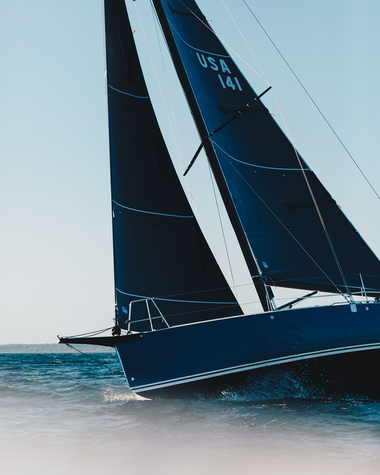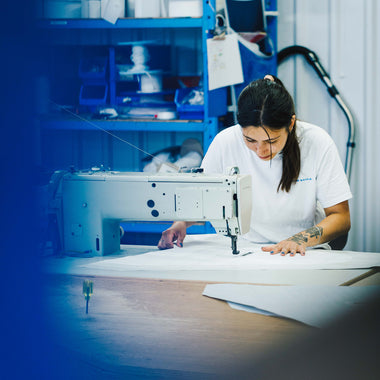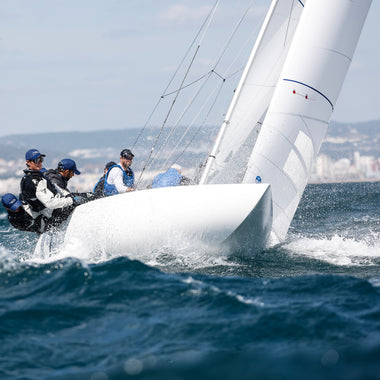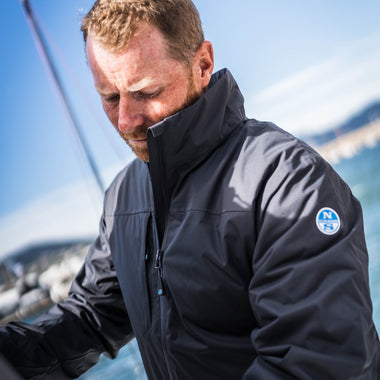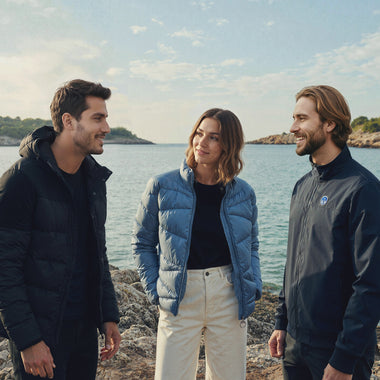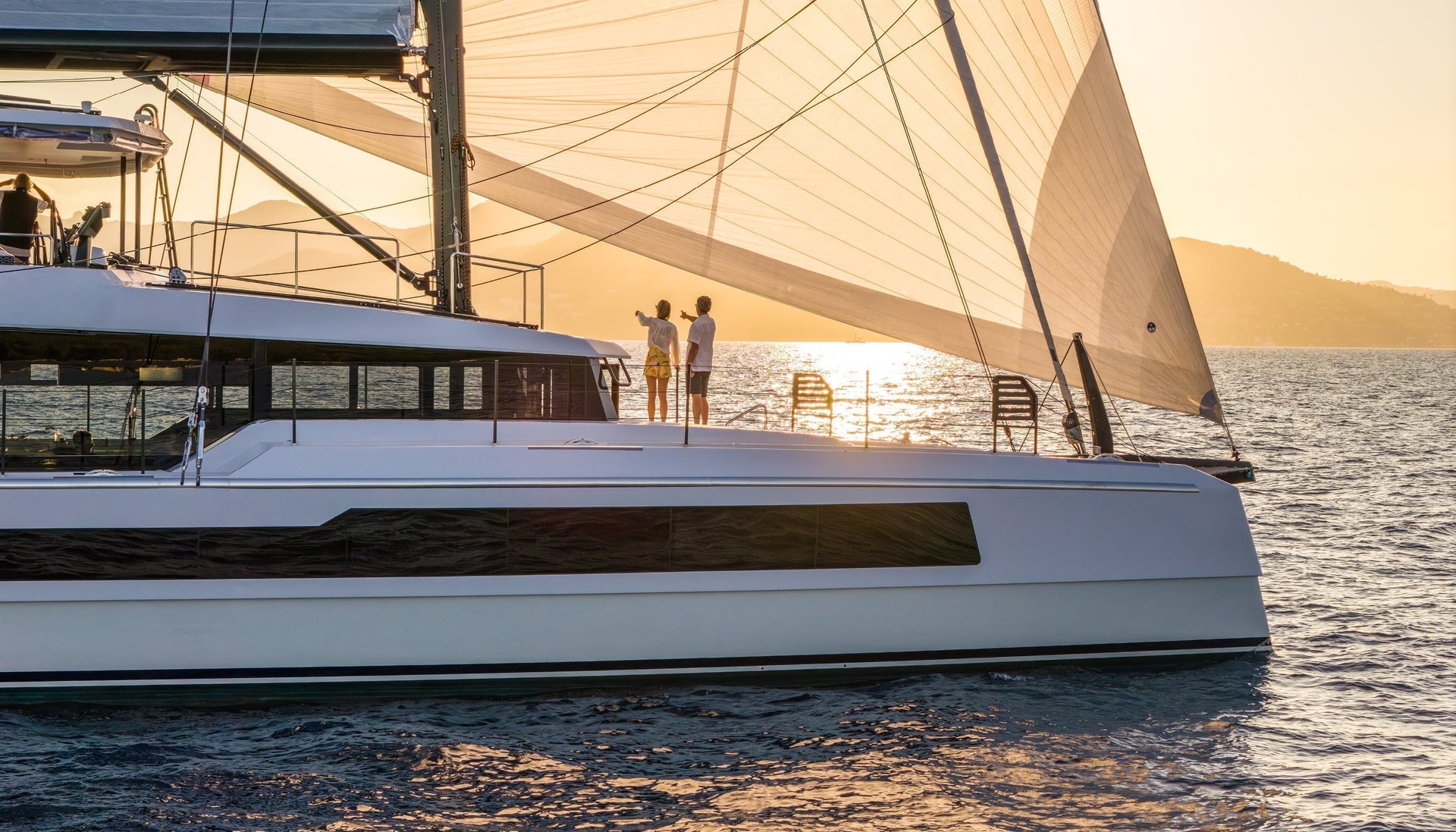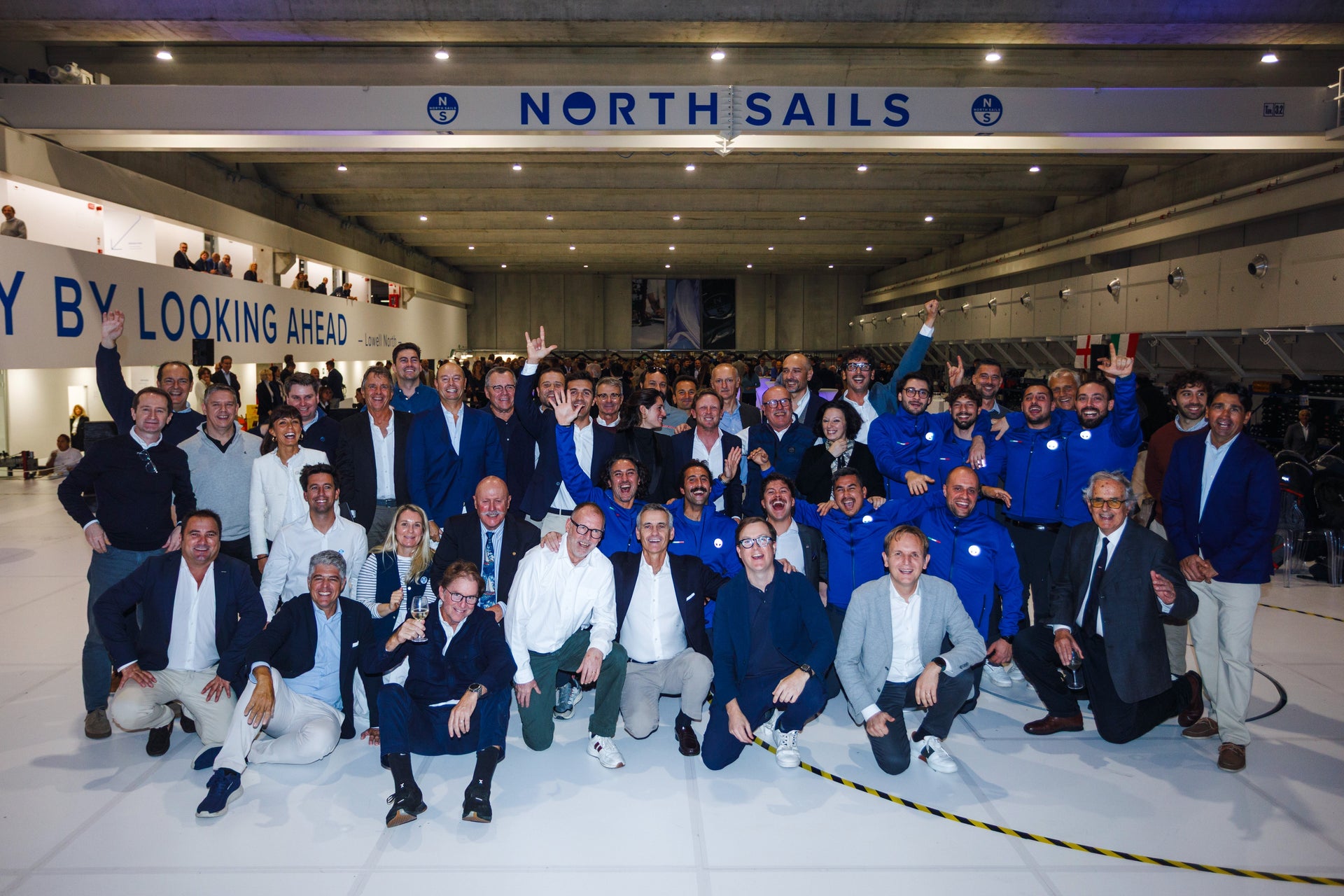A-CLASS SPEED READING
A-CLASS SPEED READING
Training, Sail Design & “An Attitude Of Continued Learnings”
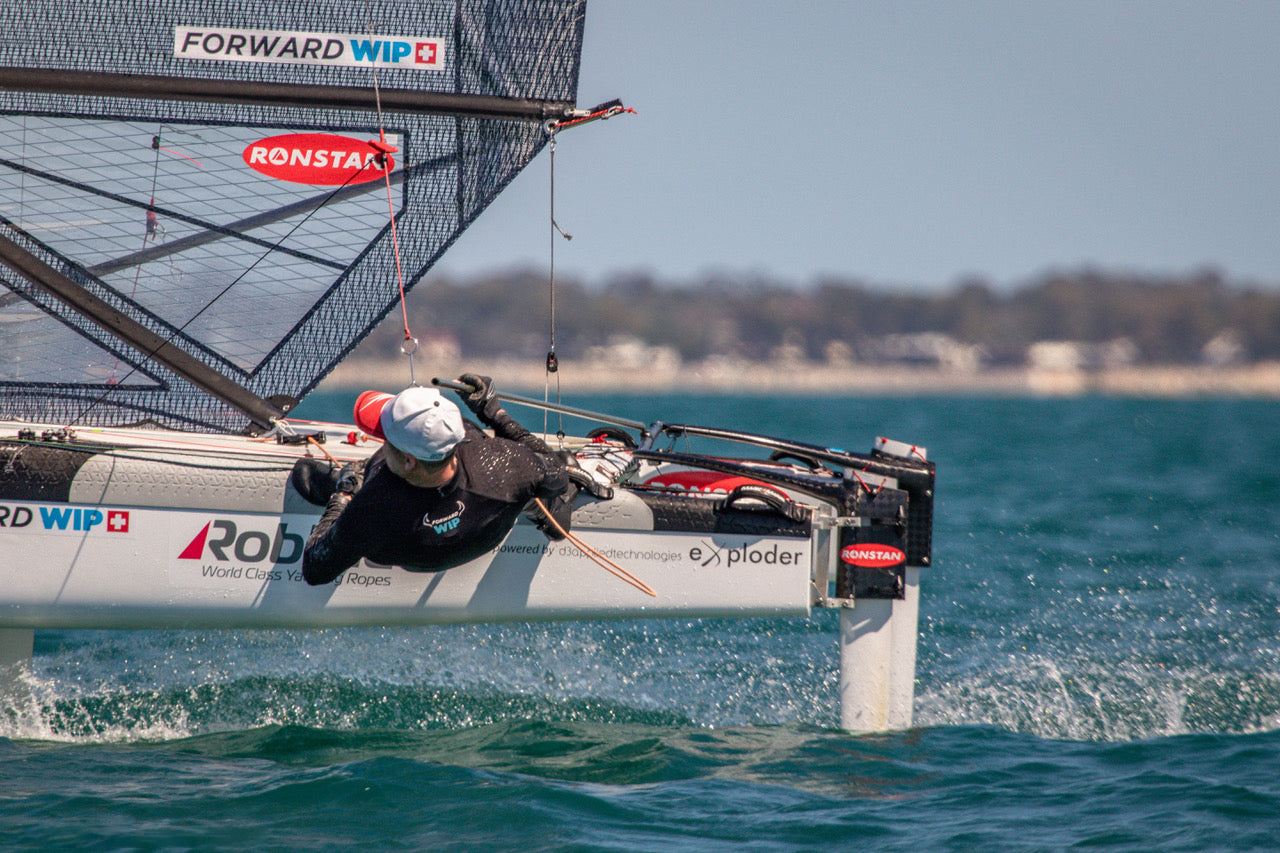
Glenn Ashby still remembers his first A Class catamaran sail like it was yesterday. “It was 1995 and it was only a 10-minute sail on a lake,” he says.
“I couldn’t get over how smooth, efficient and fast the boat was. I’ve really enjoyed the boats ever since.”
Not only has he enjoyed them, the 41-year-old sailor has been the most successful sailor in the class, bar none, upgrading his skillset as the singlehanded cats evolved into full-on foilers. In November 2018, at Hervey Bay, Australia, Glenn won his 10th A Class world championship title, adding to his collection of eight world titles in other classes plus an Olympic silver medal.
There might’ve been more world titles by now, but the talented Australian got side-tracked a few years ago, joining the Team New Zealand America’s Cup effort and winning that little-known trophy in 2017 as skipper of the team’s foiling AC50 in Bermuda.
Glenn has again signed on with TNZ as America’s Cup defender, but recently engaged in nearly a month of cross-training in the A Class, which he says is “the highest performance single-handed catamaran class in the world.” He brought along two of his TNZ teammates, Blair Tuke and Peter Burling, and they spent two weeks training on Port Phillip Bay at McCrae Yacht Club.
“It was intense,” Glenn says. “Full-on. Long days on the water and a lot of boat work. We were also learning how to foil-jibe the boats—the kind of homework best done before the regatta.
“Two days into the training, Pete and Blair were already going really well, and as they are very talented they were pushing hard immediately and we learned a lot of things very quickly working intensively as a group on and off the water.”

Despite winning six of the nine races sailed at the championship in November, the win didn’t seem easy. After three wins on the first day, Glenn was annoyed with his 5-1-3 the second day:
“Normally I’m happy pushing the boat hard and not backing off,” he says, “and I probably was sailing a little too conservatively. When you start thinking, ‘I don’t want to capsize here or damage the boat,’ you don’t get the ultimate results. That was a great lesson for me. I gave myself an uppercut to the jaw and carried on.”
Glenn finished out the regatta with a 3-1-1 and won with half as many points as second-place finisher, Mischa Heemskerk. Tuke and Burling finished third and fourth, respectively. (Results)
“There’s a fine edge with A Class boats. Sometimes you find the other side of the line and have a wobble and have to use 110-percent of your skills and knowledge to keep the boat upright or stay on the boat! I feel at times it is somewhat like racing bikes or cars where you don’t want to really exceed your skill level and rely on luck to keep in control. You don’t want to be pushing yourself outside of your comfort zone for your skill level when on the ragged edge, but you have to be all-in when racing and know where that line is and be close to it. You have to get to that level to get best performance out of your machine or vessel. Good results generally come from doing your homework very well and pushing hard during training. Couple this with learning your settings and understanding your equipment means you are in good shape to complete the exam!”
“Our training for sure gave us a step up,” Glenn continues. “The work with Pete and Blair and Ray Davies as coach and over seeing performance, set us up for one of us to have a chance of winning I feel. I was very happy and proud to have had this opportunity to work with the boys with the blessing of everyone at ETNZ. It was a great team effort again. ”
Glenn has designed and produced sails under his own label for many years and says with “limited time” these days for sailmaking, the opportunity to develop a relationship with North Sails was timely. He says,
“I do all the design work for the sails that are produced and North have been fantastic at producing them under their banner, and together we’ve had a strong relationship since day one. The partnership works well for us as I can’t put time into physically manufacturing sails these days. North has been able to continue to provide top level, high performance race sails and also added marketing, sales and customer service to my signature line range.”

Starting with his standard sail from a couple years ago, Glenn says, “I worked on a new direction and designed the DS2, which I felt was well-suited to a wide range of body weights, but specifically the 73- to 83-kilogram range. With adjustment to the spreaders, prebend in the rig and batten tensions, I could be as fast in the low end of that weight range as others near the top.
“For this year, I developed the DS2-F design with reduced luff curve and slightly different mold shaping for lighter-weight sailors, which was very solid for upwind foiling. Everyone with North Sails who used those in this regatta had a good experience with their performance —if they got off the starting line well, they were right up at the front.
“Our philosophy this year has been to target intensely the upwind foiling aspects of where the class is now. The challenge is to make a sail that also works really well in displacement mode (upwind under 10 knots). The goal is to accelerate quickly up to speed and then when foiling have a shape that’s quite clean at high apparent wind speeds as well as being able to morph into a nice aero package for downwind sailing.
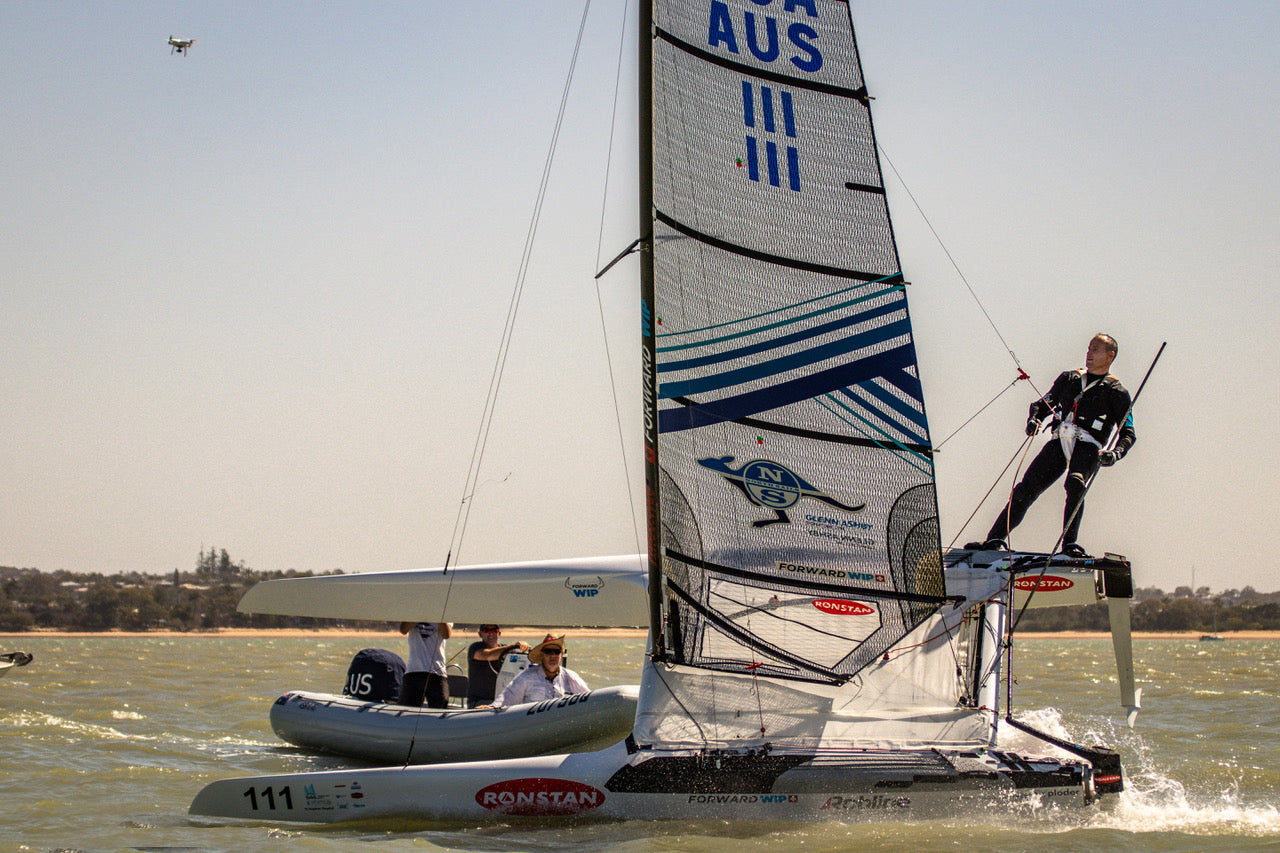
“We made a lot of changes in the bottom half of the sail. I needed to make sure that part of the sail was driving hard and also really working well when doing high boatspeed numbers. Keep in mind that at 16 to 20 knots boat speed upwind in 14 to 18 knots of true wind, your apparent windspeed can be up to 30 to 35 knots across the deck.
How important is Glenn’s use of the A-Class in cross-training, first with his Olympic Tornado campaigns and more recently with the America’s Cup?
“It’s been really important,” he says. “The knowledge and practical learnings and lessons you get from sailing high-performance boats are key, especially because the class has had such rapid growth and is continually evolving. It’s great for the brain and forces you to think outside the squares. It’s taught me to be open-minded and willing to take on new ideas.”
A good example of this occurred before these recent world championships.” We have an attitude of ‘continued learnings,’” Glenn says. “Not too many people were aware that we completely changed our rudders, daggerboards, and elevators between the Australian Nationals and the Worlds, which started two days later. Our experience gave us the ability to test the new equipment, decide it was better, measure it in, and not be scared to make the change.
“The new foils gave us a step up in global performance. The new daggerboards I felt weren’t much different upwind but downwind they were a little better at times. The elevators were fractionally longer than standard, but we felt they were a gain, too—it’s all the half-percent gains added together that can give you the edge.”

